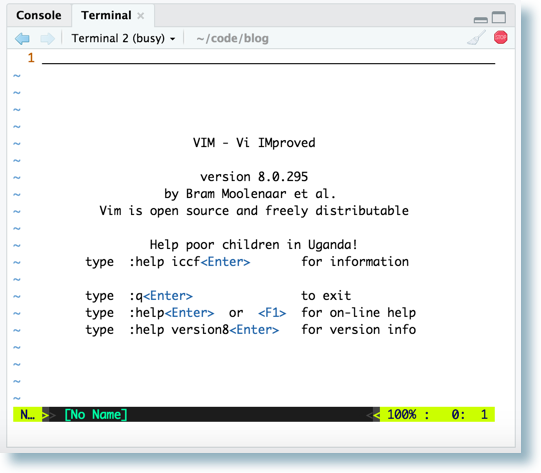Busy Terminal Problem And Implications For Mac
Yibo Zhu, Jun-Hong Cui, Zheng Peng and Zhong Zhou, Busy Terminal Problem and Implications for MAC Protocols in Underwater Acoustic Networks, in Proceedings of The 9th ACM International Conference on Underwater Networks and Systems (WUWNet'14), Rome, Italy, 2014. It says the same message: Volume Yosemite on disk4 failed to unmount: 'Kextmanger busy' i think I need to say also that I add a great installation on my pre created fusion drive but after using MultiBeast to install some kext my Yosemite lost Ethernet and sound so I am trying to reinstall on the same fusion drive.

Occasionally in Mac OS X, it may be necessary to force a program or process to quit. For example, if a particular program fails to respond or unexpectedly hangs. Every application on a Mac comprises of one or more processes. It’s usually possible to use the Force Quit command (⌘⌥ esc) in the Apple Menu, but only individual applications are listed in the Force Quit Applications window rather than all processes which are running on your computer.
• In-Camera Red-Eye Fix™ automatically corrects most instances of red-eye as you shoot. • Nikon’s Best Shot Selector (BSS) automatically takes up to ten shots while the shutter is pressed, then selects and saves the sharpest image. Convenient Features • Smart Portrait System • Smile Timer automatically releases the shutter when your subject smiles. Coolpix s8100 driver for mac.
Busy Terminal Problem And Implications For Machine Learning
If you are new to using the OSX Terminal, I can recommend the by Daniel J. Barrett as a great way to get started. The basic steps to check and kill a process are: • Open the Terminal application • List the running processes • Find the process you want to close • Kill the process. About Terminal Probably the most useful tool to check and kill processes is called Terminal, which is an application that provides access to the lower levels of the Mac OS X operating system and files. Terminal is a text-based tool which lets you conduct all manner of routine tasks such as viewing directories, copying, moving and deleting files, as well as obtain detailed information about each process running including: • the process ID (PID) • the elapsed time spent running • the command or application file path About Activity Monitor A related indispensable application is Activity Monitor – a graphical tool that allows you to manage processes, however it doesn’t have quite the same capabilities that Terminal does. Activity Monitor shows common process-related details such as the memory used and percentage of CPU that each process is consuming. When used together, Activity Monitor and Terminal provide a powerful yet relatively straightforward way to inspect and manage wayward processes.